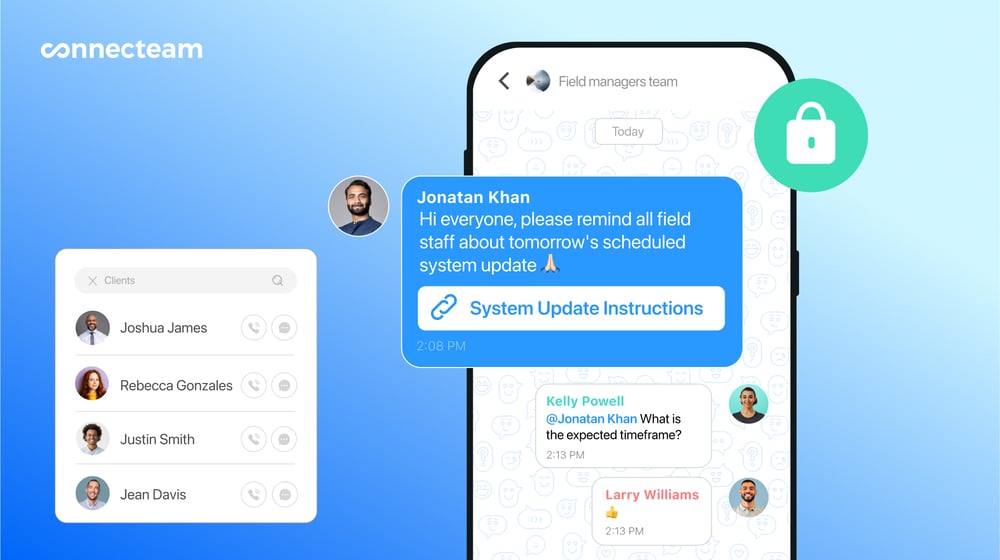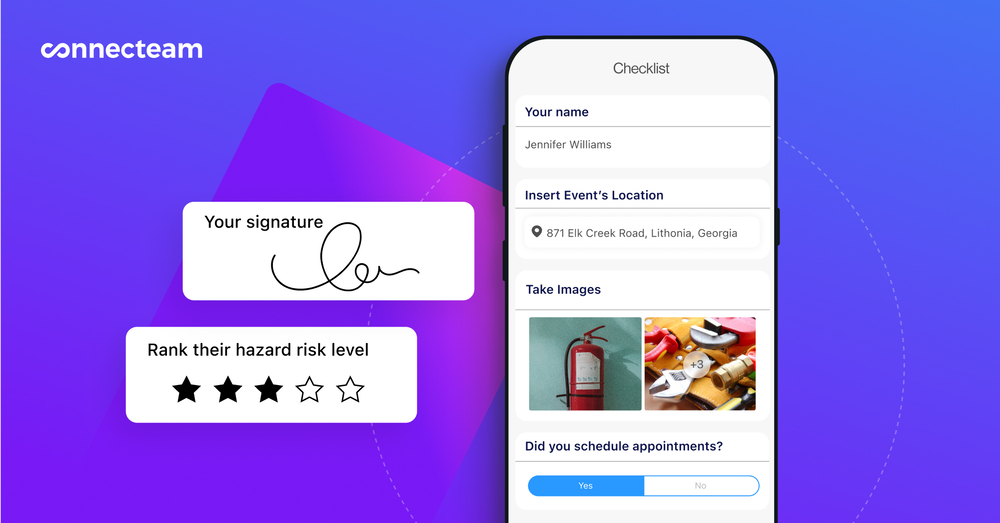With rising work distractions, language barriers, distributed teams, and more, companies must look out for potential workplace miscommunications now more than ever. This guide breaks down the consequences of poor workplace communication and strategies you can use to prevent it.
Workplace miscommunications can delay tasks, cause mistakes, and damage your reputation with customers. They can also cause frustration and resentment among team members, leading to poor team morale and a negative work environment.
But with so much noise and distraction at work today, preventing workplace miscommunications isn’t easy. You need to take active measures to ensure workers have the right tools and training for effective communication.
This guide explores how to avoid miscommunication in the workplace. Plus, you’ll learn how using software can enhance internal communication and reduce errors in your company.
Key Takeaways
- Workplace miscommunication can slow down work, create confusion, and lead to frustration.
- Miscommunications can be verbal, written, or non-verbal, like through body language.
- Training workers, actively listening to feedback, and using technology can help promote effective, confusion-free communication.
- Software like Connecteam provides tools to enhance workplace communication and reduce misunderstandings.
What Is Miscommunication in the Workplace?
Workplace miscommunication is when staff members fail to communicate effectively with each other. It can occur when a worker doesn’t accurately convey a message or idea. But it can also happen when the recipient misunderstands a message’s information or its intent.
Miscommunications can occur regardless of communication channels. For instance, they could take place in written or verbal communications and even in non-verbal cues such as body language.
Overall, miscommunication can lead to confusion, frustration, and conflict—often hampering project progress and stalling operations in the process.
What Causes Miscommunications at Work?
Here are some key factors that lead to miscommunication at work.
Poor leadership
Some leaders don’t set clear expectations about company or project-level goals. Similarly, certain managers are vague about workers’ roles and responsibilities.
When this happens, workers don’t know what to work on—resulting in confusion, duplicated or omitted tasks, delays in meeting goals, missed deadlines, and more.
Hierarchical structure
Messages can get lost or altered when moving between too many hierarchical layers.
Imagine a scenario where a business owner wants to run a new marketing program. They share their idea with the Head of Marketing, who passes the information on to the Director of Marketing, and so on until it gets to the Marketing Manager leading the program. By this point, some of the information—for instance, the business owner’s vision—could be lost or miscommunicated, leading to an ineffective marketing program.
Moreover, a rigid hierarchical structure discourages open communication between workers and teams. For example, if junior workers aren’t allowed to speak directly to senior managers, they may be reluctant to ask for clarity or more information on their tasks.
Lack of training
Many companies train only their sales and customer service employees’ communication skills. Workers who don’t receive internal communication training are more likely to make communication errors.
Differences in communication styles
This is another common miscommunication issue. For instance, a worker who prefers making small talk before making requests might misunderstand and be offended by a coworker who gets straight to the point. Workers who don’t adapt to each other’s style can feel frustrated with each other.
Incomplete information
Another source of miscommunication is when workers don’t share all the relevant information with team members. For instance, if an employee asks a coworker for help but doesn’t tell them it’s urgent, the team could miss their deadlines.
Distractions
Work sites can be noisy places and full of distractions. These might be physical, such as the sounds of heavy machinery. But distractions can also be cognitive. For instance, multitasking and working with a lot of information at once can challenge workers’ concentration.
When employees are distracted, they’re more likely to miscommunicate because they can’t devote their full attention to the task. This can easily lead to mistakes and misunderstandings.
Time constraints
Sometimes, team members work under tight deadlines. In these cases, the time pressure may contribute to them not paying attention to important messages they receive.
Similarly, they may rush through communications they send to others, potentially leaving out key points or relaying inaccurate information.
Dispersed locations
In-person communication typically results in fewer misunderstandings since team members can hear each other’s tones of voice, ask clarifying questions immediately, etc. Workers who operate from different locations or job sites often don’t have as much contact with others on their team, making it more difficult to communicate effectively.
Language and culture barriers
Many diverse teams have workers who speak different languages and come from varied cultural backgrounds, which can lead to more instances of miscommunication. Without cultural context, messages are often lost in translation or misunderstood. For instance, in some cultures, prolonged eye contact is considered confrontational rather than engaging.
No feedback mechanism
Failure to provide timely feedback can result in workers continuing to make mistakes in communication. Infrequent check-ins can also lead to employees being unclear about what’s expected of them in the first place.
Inadequate documentation
Employees are more likely to miscommunicate important information when it isn’t neatly documented. For instance, without a clear onboarding manual, a new team member may rely on an untrained coworker for important information.
Technology failures
Sometimes, technical issues during audio and video calls can create communication problems. For instance, workers may find it difficult to understand what’s being said or mishear the message if they’re on a call with poor audio quality.
Examples of Miscommunication in the Workplace
Here are 3 examples of miscommunication in the workplace.
- Email misunderstanding: An employee emails their coworker using a sarcastic or humorous tone. But, the coworker takes it seriously and feels offended or frustrated.
- Jargon use: An engineer uses a technical term or acronym without explaining what it means. This could lead to employees feeling confused.
- Body language misinterpretation: During a meeting, a team member who didn’t sleep well the night before yawns when another person is speaking. The speaker could feel offended and assume that their coworker isn’t interested in what they’re sharing.
Why Are Workplace Miscommunications Dangerous?
Miscommunications at work can have many negative consequences. Some of these are listed below.
Decreased productivity and efficiency
When workers don’t understand what’s expected of them, it can cause delays in work. Employees will often need to backtrack, clarify information, or redo the work after miscommunications occur.
Further, incomplete information can even lead to total project failure. For instance, if a manager doesn’t clearly communicate deadlines, employees could assume they have more time to work on their tasks than they do. Or, if a worker passes inaccurate information to another, they can make critical errors that are hard to come back from.
Did You Know?
Connecteam lets you add descriptions and notes and attach files to tasks so workers have everything they need to complete their work. You can also add deadlines and send reminders when work is overdue.
Damaged reputation
Delayed tasks, mistakes, and missed deadlines have more than just an internal impact. They can harm your company’s reputation with customers, leading to dissatisfaction and even loss of business. Also, depending on your legal agreements, you may need to cover the costs of mistakes and can’t pass these on to the customer.
Additionally, consistent miscommunication and team conflict can damage your brand in the market. This means you’ll attract fewer new customers—and prospective customers will be more likely to go to competing companies.
Finally, if the problem persists or the mistake is costly enough, you may find it difficult to raise funds from your investors in the future.
Missed opportunities
When your team doesn’t communicate ideas effectively, it can result in missed business opportunities. For example, imagine a scenario where your customer service manager doesn’t correctly share insights with the rest of the team. Your company may miss the chance to enhance your overall customer experience.
Moreover, workers who spend too long trying to understand each other have less time to innovate and develop creative ways of working. This can leave your company disadvantaged in the market.
Negative work environment and high turnover
Miscommunications can cause frustration and stress among team members. This includes those who feel misunderstood and those who struggle to understand.
When verbal, miscommunication can often lead to finger-pointing, fostering a culture of blame. It’s also common for workers to misunderstand their colleagues’ non-verbal cues, such as their tone over email or their body language, which can cause tension across your team.
These miscommunications can lead to resentment, decreased employee morale, and even a hostile work environment.
This can create a domino effect that results in low employee engagement and retention levels in your company.
Legal, compliance, and safety issues
Some miscommunications can lead to legal or compliance issues. For example, if a misunderstanding leads to a property manager not conducting a tenant background check, the landlord could take legal action against them for violating the terms of their contract.
Did You Know?
With Connecteam’s forms and checklists, your employees can share incident reports, safety checklists, and more straight from the field. They can also e-sign these for more accountability and send them to you in real time.
Get started with Connecteam for free today.
How To Avoid Miscommunication in the Workplace
Following these best practices can help you prevent miscommunication at your company.
Set clear goals and expectations

Managers and leaders need to clearly communicate their company’s goals to employees so they understand the mission. Further, managers should also lay out how each worker will contribute to these goals.
Do this by setting long-term goals for workers to achieve and outlining employees’ key roles and responsibilities for short-term projects and tasks. You can use the SMART framework to help workers set goals that are specific, measurable, achievable, relevant, and time-bound.
In addition to telling workers what to do, be transparent about the “when.” Establish clear deadlines for work and ensure your team members know when their tasks are due.
Provide regular training and development
The right training courses can help workers communicate more effectively and with fewer errors. Consider assigning communication skills training to all your employees—regardless of their role or level.
Also, promote active listening as another way to prevent workers from misunderstanding information, especially in noisy or distracted work environments. Encourage them to ask clarifying questions or seek feedback when they haven’t understood something.
Finally, set guidelines and standards for written and verbal communication at work. For example, you can have rules around the language workers should communicate in and which communication channels they should use. These rules can help establish consistency around how your team members communicate.
Did You Know?
Connecteam has a built-in training tool. You can quickly create communication training courses from scratch and roll them out to workers. Plus, courses and materials can include images, videos, audio, quizzes, and more to make learning engaging.
Get started with Connecteam for free today
Conduct check-ins and gather feedback
Check in with employees to provide them with a safe space to ask questions if they’re unclear on something at work.
Also, gather regular employee feedback through in-person meetings, audio or video calls, or surveys. This can help highlight any themes or red flags in communication. For instance, if workers from the same team raise concerns about their manager’s vague communication style, you may need to provide the manager with additional coaching to address the issue.
This Might Interest You
Check out our guide on employee pulse surveys and questions to include in them.
Document critical information
Ensure you store and organize your standard operating procedures, safety checklists, onboarding materials, and other essential company files in a secure central location. You can do this physically, such as with a filing cabinet at your job site, or digitally using dedicated software.
This way, workers won’t need to rely solely on communicating with each other for information. Instead, they can turn to a single source of truth to get the facts. Employees can also verify information and look up documents to answer questions whenever needed, reducing communication mistakes.
Build cultural awareness and sensitivities
Educate workers on how diverse backgrounds and perspectives play a role in miscommunications. Conducting diversity, equity, and inclusion (DEI) training is a great way to do this. You might use software like Connecteam to create DEI training courses yourself or work with an instructor to roll out training.
Also, you should encourage team members to use a common language at work and avoid using cultural references without context. Doing so helps ensure everyone can understand what’s being communicated.
Foster a culture of openness and transparency
Another key way to avoid miscommunication in the workplace is by building a company culture where employees can ask questions without hesitation.
You can achieve this by asking your managers and leaders to have an “open-door policy.” This means workers can ask their superiors for support or to clarify information at any time. Open-door policies can even apply to remote or dispersed roles. For example, managers can encourage workers to message or call them with questions whenever required.
Finally, setting up company events where team members can meet and get to know each other is a great way to build openness. When workers are familiar and friendly with their colleagues, they’re more likely to feel comfortable asking for clarifications when they don’t understand something. They’re also less likely to misinterpret non-verbal cues or feel resentful toward their coworkers.
Use technology
Technology like knowledge bases, messaging apps, and voice and video conferencing tools make it incredibly easy for employees to communicate across locations.
Internal communication software combines all the above tools and plays a huge role in improving communications at work. The right platform lets workers connect in real time, enables training, makes it easy to gather feedback, and even helps you manage in-person and virtual events.
This Might Interest You
We’ve put together a list of the best team communication apps to help your staff communicate more effectively.
Improving Workplace Communications with Connecteam
Connecteam is an all-in-one work management platform with various features you can use to implement all the strategies we covered above.

For instance, Connecteam has an in-app chat that supports one-to-one and group instant messaging. Send texts, photos, videos, files, and more instantly, no matter where you are.
The platform also offers a newsfeed feature that lets you share real-time updates with your entire company at once. It lets you see who’s viewed and interacted with your posts—perfect for ensuring that key messages aren’t missed.

In addition, there’s a cloud-based knowledge base where you can store all your training manuals, standard operating procedures, and other important company documents—including images, videos, audio clips, PDFs, and more.
Finally, Connecteam’s surveys and polls feature is ideal for gathering employee feedback on any topic you’d like—either instantly (through live digital polls) or by a set deadline (through surveys).
Did You Know?
Besides these tools, Connecteam offers many other operations and HR management features—from a smart employee time clock and employee scheduling tools to payroll integrations and much more.
Summary
Miscommunication can have several negative—and some very serious—consequences for a business. It can hamper progress, create team conflict, and even put you at legal risk. Examples of miscommunication in the workplace show that it applies to all forms of communication: verbal, written, and body language.
With high-pressure work, information overload, and diverse teams, it’s easier than ever for employees to misunderstand messages or intentions. That’s why you must proactively prevent miscommunication at your company. You can do this by setting clear expectations, training your staff members, documenting information, and following the other strategies outlined in this guide.
Software like Connecteam simplifies all this for you. It lets you chat with workers in real time, plan events, roll out surveys, and more.



